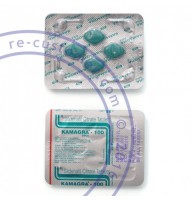The choice of surgery for an enlarged prostate (benign prostatic hyperplasia, BPH) depends on several factors including the size of the prostate, severity of symptoms, overall health of the patient, and preferences discussed with a healthcare provider. Here are some common surgical options:
Transurethral Resection of the Prostate (TURP): TURP is one of the most common and established procedures for BPH. It involves removing part of the prostate gland that is blocking urine flow through the urethra. TURP is effective for relieving symptoms but may have a longer recovery time compared to some newer procedures.
Laser Surgery: There are several types of laser surgeries used to treat BPH. These include:
- Holmium Laser Enucleation of the Prostate (HoLEP): Uses a laser to remove excess prostate tissue.
- GreenLight Laser Therapy (PVP): Uses a laser to vaporize prostate tissue.
- Thulium Laser Enucleation of the Prostate (ThuLEP): Similar to HoLEP, uses a different type of laser.
Laser surgeries typically have shorter hospital stays and faster recovery times compared to TURP.
Transurethral Incision of the Prostate (TUIP): This procedure involves making small cuts in the prostate gland to widen the urethra and improve urine flow. It is generally used for men with smaller prostates or when preservation of sexual function is a priority.
Prostatectomy: In rare cases where the prostate is very large or other procedures are not suitable, a traditional prostatectomy (open surgery) may be performed to remove the entire prostate gland.
The choice of surgery is typically made after a thorough evaluation by a urologist who considers the size of the prostate, severity of symptoms, patient's overall health, and their preferences regarding potential side effects such as sexual function and recovery time. Each procedure has its benefits and risks, which should be discussed in detail with a healthcare provider.
Before opting for surgery, doctors may also consider less invasive treatments such as medication or minimally invasive procedures like UroLift or Rezūm therapy, which use different mechanisms to relieve prostate obstruction.
Ultimately, the best surgery for an enlarged prostate depends on individual circumstances and should be determined through careful consultation with a qualified healthcare provider.
Read also facts about erectile dysfunction.

